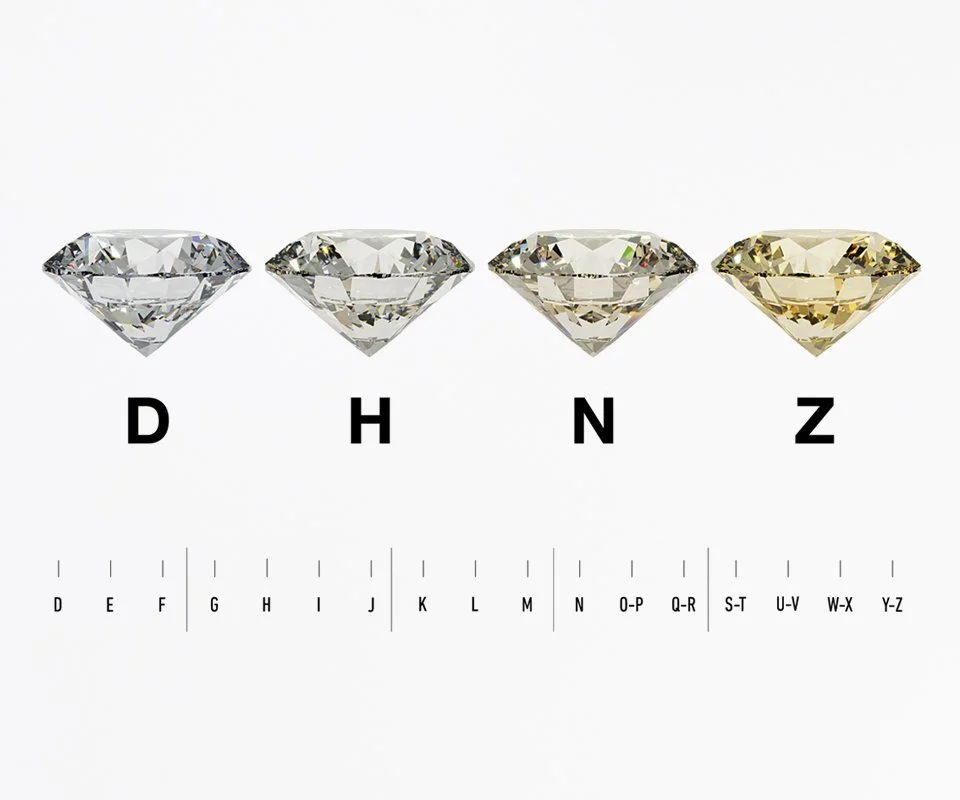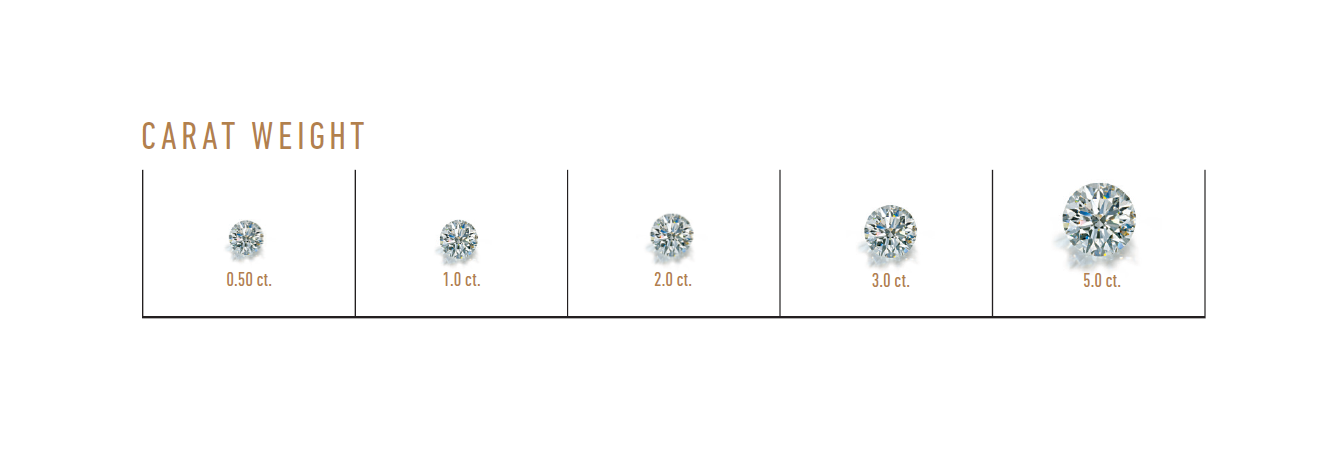Education

4Cs of
Diamond Quality
Diamonds
The 4Cs are industry standards that are used to scientifically evaluate every diamond’s unique characteristics. GIA has spent nearly 100 years dedicated to transforming and innovating consistent standards and uniform practices worldwide.
The phrase, “the 4Cs of diamond quality” was first coined by GIA founder Robert M. Shipley in the 1940s.
Shipley’s successor, Richard T. Liddicoat and Associates, expanded the 4Cs Scale with the D-to-Z Color scale and the Clarity Scale. Led by the same group, the Diamond Cut Grading System for round brilliant diamonds was introduced in 2006.
Photo courtesy of Sotheby’s.
Most people picture a colorless diamond when imagining one. Diamond color refers to the absence of color, which significantly affects quality and price.
Diamonds come in various hues, from colorless to yellow, gray, brown, and the rainbow spectrum.
Expert evaluation under controlled lighting against masterstones establishes color grades on the GIA D-to-Z Color Scale, from D (colorless) to Z (light).
Today, the D-to-Z diamond color scale as followed by the GIA laboratory is regarded globally as the universal standard for color grading.
COLOR
Every diamond is unique, formed by heat and pressure within the earth, containing birthmarks like inclusions and blemishes caused by trapped crystals.
These affect visibility, location, size, and number, classified as inclusions or blemishes. Precise clarity grading is crucial when evaluating a diamond for purchase.
Clarity
The diamond's cut showcases craftsmanship and affects its interaction with light. Brightness, Scintillation, and Fire gauge a diamond's quality.
Cut involves the diamond's facets' arrangement and proportions, not just its shape. Only round brilliant cut diamonds have cut grades due to standardized facets. Other shapes belong to the fancy shapes category.
Proportions impact a diamond's appearance and attractiveness. Several factors determine a diamond's cut quality, with personal preference playing a role. Each grade covers various proportion sets, allowing for individual choices.
Cut
Carat measures weight, not size. A metric carat is defined as 200 milligrams. Each carat is subdivided into 100 points, allowing for measurement to the hundredth decimal place. Carat weight can be measured to the thousandth decimal place for rounding purposes.
The term carat weight comes from carob seeds and has been in use since the 1500s. Early gem traders used to use small uniform seeds to counterweight their scales. Today a carat is a standard milligram measurement of weight, recognized and used globally.
Certain carat weights are considered to be magic sizes for their desirability – 1.00 carat, 1.50 carats, and 2.00 carats. Although it is difficult to visually distinguish a 0.99 carat diamond from a 1.00 carat, the price difference can be significant.








